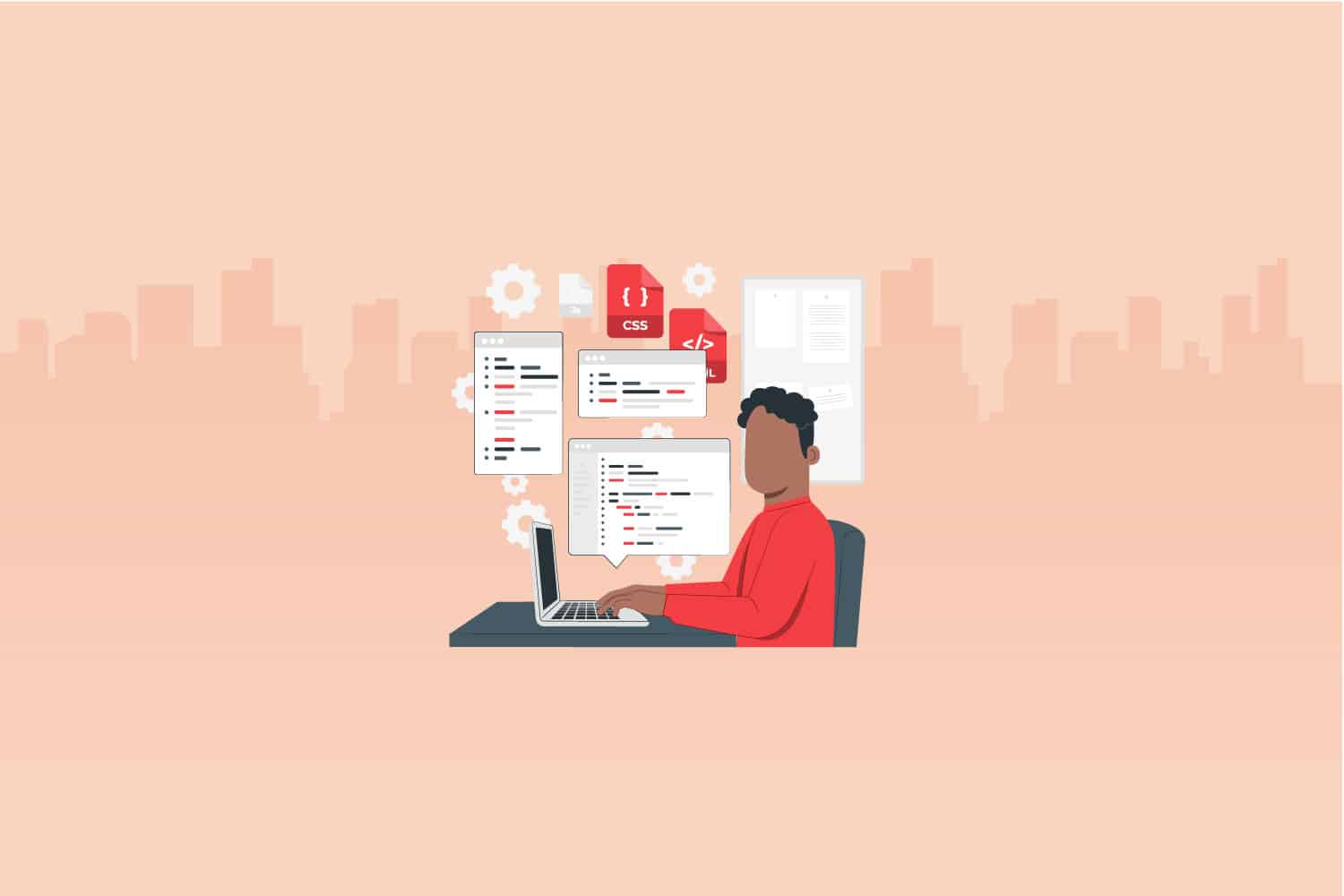We know that hiring pressure can make a recruiter reconsider and overthink all their decisions but now with the help of online assessment tools they can exactly get the workers they need without wasting resources and questioning any of their decisions. However, the journey towards choosing the right talent assessment platform can be complex, as the options seem endless and the stakes high.
This comprehensive guide aims to simplify this process by breaking it down into essential steps and considerations that go beyond surface-level features. From understanding your organization’s unique needs to aligning with strategic goals, we delve into the intricacies of selecting a talent assessment platform that is not only functional but truly transformative.
Understanding your talent assessment needs
In today’s rapidly evolving business landscape, the importance of selecting the right talent assessment platform cannot be overstated. With the power to shape the trajectory of your organization by identifying, nurturing, and retaining top-notch talent, the decision warrants careful consideration. This comprehensive guide aims to illuminate the intricate process of understanding your unique talent assessment needs, ensuring that the platform you choose aligns seamlessly with your organizational goals.
Assessing Organizational Objectives: The first step involves a deep dive into your company’s objectives. Are you looking to enhance leadership capabilities, streamline recruitment, or identify skill gaps within your teams? Defining these goals helps pinpoint the specific features and functionalities your ideal platform should possess.
Analyzing Workflows: Understanding your existing talent management workflows is essential. From onboarding to career development, each phase demands different assessment tools. By comprehending these workflows, you can ascertain which platform integrates most effectively into your processes.
Scalability and Customization: As your business grows, so will your talent assessment needs. A platform should be not only scalable but also customizable to adapt to evolving requirements. Whether you’re a startup or an established enterprise, this flexibility ensures a long-term fit.
Data-driven Insights: The ability to garner meaningful insights from assessment data can revolutionize decision-making. Prioritize platforms that offer robust analytics, aiding in the identification of trends, strengths, and areas for improvement across your talent pool.
In conclusion, comprehending your talent assessment needs is pivotal to selecting a platform that aligns with your organizational vision. This guide equips you with the tools to embark on this journey of discovery, ultimately propelling your company towards unprecedented growth and success.
Tips for selecting the perfect talent assessment platform
In the era of data-driven decision-making, choosing the perfect talent assessment platform can feel like navigating a complex maze. With a plethora of options available, each boasting a range of features, making the right choice requires a strategic approach. This article offers invaluable tips to guide you through this labyrinth and select a talent assessment platform that aligns seamlessly with your organization’s needs.
Comprehensive Needs Assessment: Begin by conducting an in-depth analysis of your organization’s talent management needs. Understand the key objectives, whether it’s identifying high-potential employees, enhancing team dynamics, or improving training programs. This clarity will serve as your North Star throughout the selection process.
Scalability and Future-readiness: A platform that suits your needs today might be inadequate tomorrow. Ensure the platform is not only capable of accommodating your current workforce but is also scalable to support future growth. Flexibility to integrate new features and technologies is a crucial consideration.
User-friendly Interface: A platform’s efficacy relies heavily on user adoption. An intuitive, user-friendly interface enhances engagement and encourages participation across all levels of the organization. Test the platform’s interface to ensure it aligns with the technical comfort of your users.
Data Security and Compliance: As assessments involve sensitive employee data, prioritizing platform security is paramount. Verify that the platform adheres to industry standards and regulations, safeguarding your data from breaches or unauthorized access.
Customization and Integration: No two organizations are identical. Look for a platform that allows customization to align with your unique workflows. Additionally, seamless integration with your existing HR software ecosystem prevents disruptions and streamlines processes.
In conclusion, navigating the maze of talent assessment platforms requires a strategic mindset. By considering your organization’s needs, scalability, user experience, security, and integration capabilities, you’ll be equipped to make an informed decision that propels your talent management strategies to new heights.
A step-by-step process to choose the right talent assessment platform
Selecting the right talent assessment platform might seem like a daunting task, but breaking it down into a step-by-step process can make it more manageable and insightful. This guide aims to demystify the journey of choosing a talent assessment platform, ensuring a methodical approach that leads to informed decision-making.
1. Define Clear Objectives: Begin by outlining your organization’s specific goals for talent assessment. Whether it’s improving hiring accuracy, identifying skill gaps, or nurturing leadership potential, clear objectives will guide your platform selection.
2. Assess Your Current State: Evaluate your existing talent management processes, identifying pain points and areas of improvement. Understanding what’s working and what’s not will help you target specific platform features.
3. Research and Shortlist: Research various talent assessment platforms available in the market. Consider factors like features, user reviews, reputation, and scalability. Create a shortlist of platforms that align with your requirements.
4. Evaluate Features: Compare the shortlisted platforms’ features against your objectives. Look for tools that offer customizable assessments, data analytics, integration capabilities, and user-friendly interfaces.
5. Check Flexibility: A platform should adapt to your organization’s unique needs. Ensure it can accommodate your existing workflows and can be tailored for future changes.
6. Data Security and Compliance: Prioritize platforms that prioritize data security and comply with relevant regulations. Your candidate and employee data must be protected.
7. Request Demos: Reach out to platform providers for demos. This hands-on experience will help you gauge usability, user experience, and overall fit for your organization.
8. Seek Feedback: Involve relevant stakeholders, such as HR teams and IT departments, in the decision-making process. Their input can provide valuable insights and address potential concerns.
By following this step-by-step process, you’ll be well-equipped to select a talent assessment platform that aligns with your organization’s needs, streamlines processes, and drives better talent management outcomes.
Criteria for choosing the best talent assessment solution
Selecting the best talent assessment solution hinges on a meticulous evaluation process that considers various critical criteria. This guide delves into the essential factors to assess when choosing a talent assessment solution, ensuring that your organization makes a well-informed and effective decision.
1. Validity and Reliability: The foundation of any assessment solution is its ability to produce consistent and accurate results. Look for solutions with a proven track record of validity and reliability in predicting job performance and skills.
2. Customizability: Your organization’s talent assessment needs are unique. A robust solution should offer customization options to tailor assessments to specific roles, departments, or skill requirements.
3. Comprehensive Reporting: Meaningful insights drive actionable decisions. Seek a solution that provides comprehensive reporting and analytics, enabling you to identify trends, strengths, and areas for improvement.
4. User Experience: A user-friendly interface enhances engagement and minimizes the learning curve for candidates and assessors. An intuitive platform increases the effectiveness of the assessment process.
5. Integration Capabilities: Seamless integration with your existing HR systems ensures a streamlined workflow. A solution that can easily integrate with your applicant tracking system (ATS) and other tools saves time and reduces errors.
6. Scalability: As your organization grows, so will your assessment needs. Choose a solution that can scale with your business without compromising performance or quality.
7. Mobile Compatibility: In a mobile-driven world, assessments accessible on various devices are advantageous. Look for solutions that support mobile compatibility to reach candidates regardless of their location.
8. Support and Training: A comprehensive solution should offer adequate customer support and training resources. Responsive support and training materials contribute to a successful implementation.
By evaluating these criteria, you can confidently select a talent assessment solution that aligns with your organization’s goals, enhances recruitment and development processes, and ultimately contributes to long-term success.
Matching your requirements with the right assessment platform
In the realm of talent assessment platforms, finding the perfect fit is akin to tailoring a bespoke suit – it requires careful consideration, attention to detail, and a deep understanding of your organization’s unique needs. This guide focuses on the art of matching your specific requirements with the ideal assessment platform, ensuring a seamless integration that drives excellence in talent management.
1. Thorough Needs Assessment: Start by conducting a thorough assessment of your organization’s talent management goals. Whether you’re seeking to identify leadership potential, improve team dynamics, or streamline hiring, this clarity will serve as a blueprint for your assessment platform selection.
2. Feature Alignment: Compare the features of available platforms with your defined needs. Look for tools that offer customizable assessments, advanced analytics, AI-driven insights, and compatibility with your existing HR software ecosystem.
3. Flexibility and Customization: Each organization operates uniquely. Opt for a platform that offers flexibility and customization options to adapt to your workflows and evolving requirements.
4. User-Centric Design: The success of an assessment platform relies on user engagement. Prioritize platforms with user-centric design, intuitive interfaces, and an enjoyable candidate experience.
5. Integration with HR Processes: A seamless integration with your HR processes, from recruitment to performance management, is crucial. The platform should complement and enhance your existing workflows.
6. Scalability: As your organization grows, the platform should grow with you. Choose a solution that can accommodate increasing assessment needs without sacrificing quality.
7. Training and Support: A well-rounded platform comes with comprehensive training and support resources. Ensure your chosen platform provider offers accessible support and training materials for effective implementation.
By carefully tailoring your requirements to the right assessment platform, you can elevate your talent management practices to a level of excellence. The harmonious alignment of needs and features will empower your organization to make data-driven decisions, identify top talent, and nurture their potential for long-term success.
Factors to consider when selecting a talent assessment platform
Choosing a talent assessment platform extends beyond a checklist of features; it involves a holistic evaluation encompassing various strategic factors. This guide delves into the essential considerations that go beyond features, ensuring you make a well-rounded decision that aligns with your organization’s long-term goals.
1. Alignment with Strategy: Your assessment platform should align seamlessly with your organization’s talent management strategy. It should contribute to your overall objectives, whether it’s boosting employee retention, succession planning, or fostering diversity and inclusion.
2. Data Privacy and Security: The platform will handle sensitive candidate and employee data. Ensure it adheres to data privacy regulations and employs robust security measures to safeguard this information.
3. Compatibility with Company Culture: A platform that resonates with your company’s culture enhances user engagement. Consider whether the platform’s tone, branding, and interface align with your organizational identity.
4. Long-term Viability: A platform’s longevity is critical. Research the provider’s track record, financial stability, and commitment to innovation to ensure it will remain a relevant and supported solution.
5. User Adoption: Features are only effective if they’re embraced. Prioritize platforms with a user-friendly interface, minimal learning curve, and responsive customer support to encourage user adoption.
6. Return on Investment (ROI): Assess how the platform contributes to your organization’s bottom line. Consider both direct savings and enhanced outcomes when evaluating the platform’s ROI.
7. Vendor Relationship: Evaluate the provider’s reputation, customer service, and willingness to collaborate. A strong vendor relationship can lead to smoother implementation and ongoing success.
By considering these factors alongside features, you’ll make a more informed and strategic decision when selecting a talent assessment platform. This holistic approach ensures that your chosen platform not only meets your current needs but also contributes to your organization’s growth and success in the long run.
Picking the ideal talent assessment platform for your organization
Selecting the ideal talent assessment platform is a pivotal decision that can shape the future of your organization’s talent management strategies. This guide is designed to guide you through the intricate process of making the right choice, ensuring that your chosen platform aligns seamlessly with your unique organizational needs and aspirations.
1. Holistic Alignment: Begin by aligning the platform with your organization’s overarching goals. Whether it’s enhancing employee development, optimizing hiring processes, or identifying leadership potential, a cohesive alignment is key.
2. Needs vs. Features: While features are crucial, prioritize your needs over the allure of functionalities. Focus on platforms that offer the tools essential for your specific talent management objectives.
3. User Experience: The platform’s usability can impact its effectiveness. A user-friendly interface fosters engagement, ensuring that candidates and assessors alike have a positive experience.
4. Future-proofing: Look beyond immediate requirements and consider the platform’s adaptability for future needs. Choose a solution that can scale, evolve, and incorporate emerging assessment methodologies.
5. Analytics and Insights: Data-driven decision-making is a cornerstone of modern talent management. Prioritize platforms that provide robust analytics and insights to extract meaningful trends and actionable insights.
6. Integration Potential: A harmonious integration with your existing HR ecosystem enhances efficiency. Choose a platform that seamlessly integrates with your applicant tracking system (ATS) and other software.
7. Support and Training: A comprehensive platform comes with comprehensive support. Evaluate the level of customer support, training resources, and onboarding assistance the provider offers.
By meticulously considering these factors, you’ll make an informed decision when selecting the ideal talent assessment platform. This choice will empower your organization to not only streamline its talent management processes but also to nurture and elevate its workforce for sustained success.
Selecting a talent assessment platform aligned with your goals
The journey from analysis to action in talent assessment involves a strategic process of selecting a platform that harmonizes with your organization’s goals. This guide outlines the essential steps to ensure that your chosen talent assessment platform translates analysis into actionable results, driving success in your talent management endeavors.
1. Goal Clarity: Start by gaining a crystal-clear understanding of your talent management goals. Whether you aim to enhance workforce diversity, identify emerging leaders, or optimize training initiatives, your objectives will serve as a compass for platform selection.
2. Evaluation of Needs: Evaluate your organization’s specific needs, considering factors like roles, departments, and growth projections. A precise assessment enables you to pinpoint which features are crucial for achieving your goals.
3. Strategic Alignment: Align the platform’s capabilities with your strategic talent management initiatives. Prioritize tools that facilitate progress towards your goals, from advanced assessment methodologies to insightful data analytics.
4. Measurable Outcomes: Seek a platform that offers measurable outcomes. The ability to track and quantify progress toward your goals ensures that your assessment efforts translate into actionable insights.
5. Integration and Collaboration: The selected platform should seamlessly integrate with your existing HR systems, fostering collaboration across various stages of talent management, from recruitment to performance reviews.
6. Continuous Improvement: A dynamic talent assessment platform promotes continuous improvement. Choose a solution that adapts to changing needs and leverages emerging technologies to keep your strategies relevant.
7. Scalability and Future-readiness: As your organization evolves, the platform should grow with you. Opt for a solution that can accommodate increased demands, ensuring a sustained alignment with your goals.
By following these steps, you can bridge the gap between analysis and action in talent assessment. Selecting a platform that is in sync with your goals will not only enhance your talent management strategies but also propel your organization toward a more prosperous and innovative future.
Conclusion
Selecting the ideal talent assessment platform is an investment that extends far beyond the immediate. It’s a strategic move that can shape the future of your organization, influencing everything from hiring precision to leadership cultivation. As you navigate the realms of features, alignment, scalability, and more, remember that the ultimate goal is to empower your organization to turn data-driven insights into actionable results. By embarking on this journey armed with knowledge and a clear vision, you’re poised to choose a platform that propels your talent management strategies from analysis to action. With the right platform at your disposal, your organization can unlock its full potential, embracing a future where talent is not just assessed, but harnessed and nurtured for sustained success.
Testlify offers a range of assessments and challenges that allow you to gauge candidates’ knowledge, problem-solving skills, and creativity in real-world scenarios. With Testlify, you can administer real-world challenges that simulate the actual assessment process, giving candidates the opportunity to showcase their skills and approach. The platform provides a structured and standardized assessment process, allowing you to compare candidates objectively and make informed decisions. By incorporating Testlify into your hiring process, you can ensure a more comprehensive and reliable evaluation of candidates’, ultimately helping you identify the most qualified individuals for your team.
With our extensive test library, you can objectively evaluate candidates’ abilities, ensuring you shortlist the most talented individuals efficiently. Ready to unlock the potential of your hiring process? Book a free 30-minute live demo with Testlify. Our expert team will guide you through the platform, showcasing relevant skill tests tailored to your organization’s needs. With our support, you can streamline candidate selection, saving valuable time and resources.







